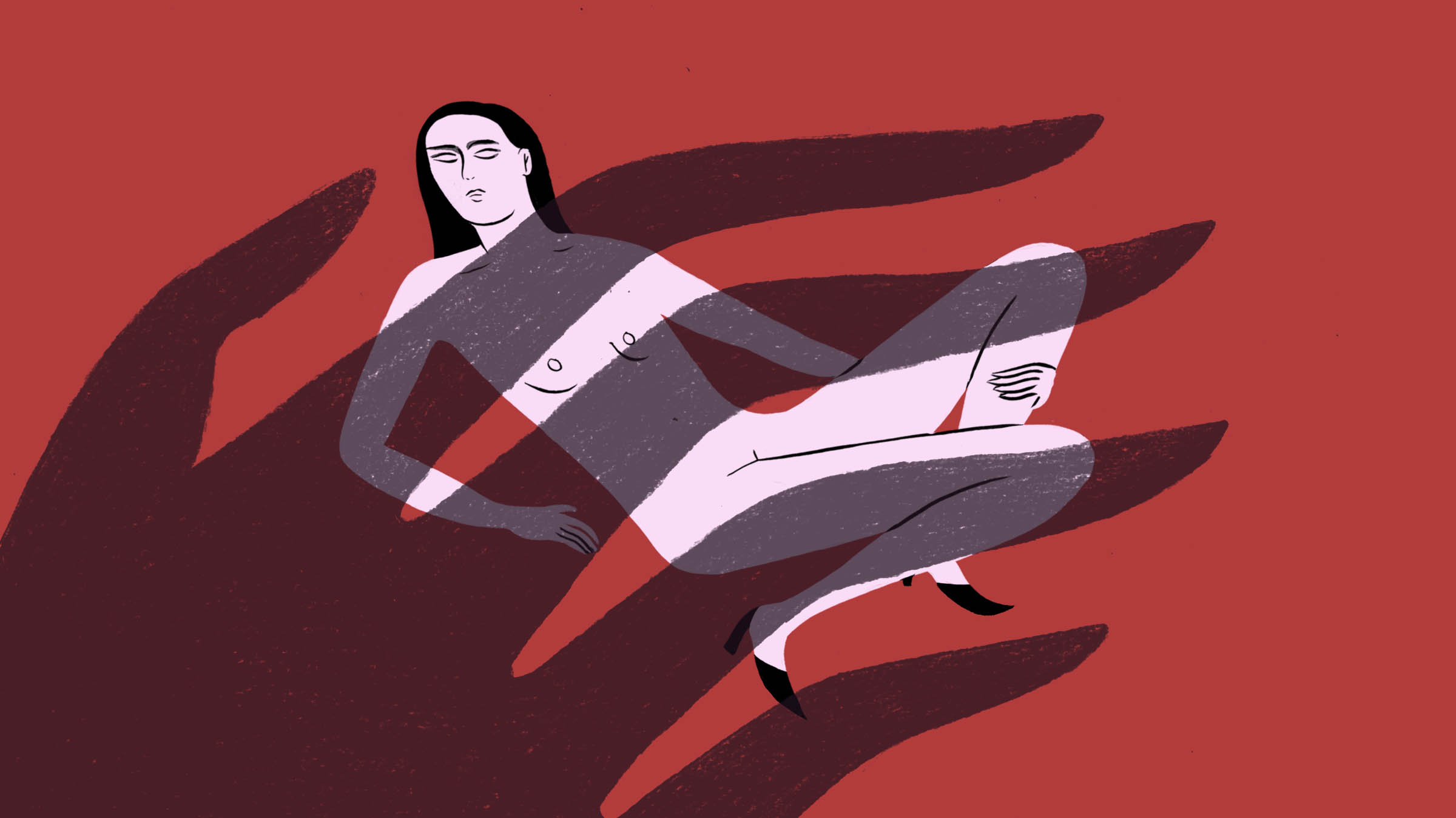It’s a good moment to be a boundary-breaker in fashion. For the artist and model Saskia de Brauw, whose work inquires after the physical body, it’s a turning of a corner. Much of de Brauw’s creative explorations, such as her latest film and book project, Ghosts Don’t Walk In Straight Lines, inquires after the physical body—the way it takes shape in space. The manner in which it influences that space through movement. Bearing an exquisite, gamine look, the 36-year-old has long broken the boundaries of masculine and feminine. In Ghosts, her poses are powerful yet vulnerable, stretching from portraits of her delicate frame against a big, bad cityscape or her lone, contorted form against a stark studio wall, exploding with energy. Amidst the cultural awakening brought to light by the #MeToo moment, de Brauw’s experience as model and visionary creative offers a unique perspective for those looking to gauge the efforts being made to protect the most vulnerable in the fashion industry: models.
The Fall Winter 2018 season was the first to put into practice the model protection policies since floodgates opened in October 2017 and an outpouring of model revelations, both on and off set, followed. Kate Upton and Sara Sampaio both detailed stories of sexual harassment and exploitation this fall. Cameron Russell shared anonymous accounts of model’s who experienced assault to her Instagram account. And the transgender model Terry Quinlivan discussed her experience of abuse on-set at a panel discussion for the Gurls Talk festival alongside an army of other accounts across social media.
De Brauw walked for The Row and Jason Wu’s New York shows this season, the year that a series of modest policy implementations were enacted across the industry. Kering and LVMH established a charter for the well-being of models set to roll out across all their brands in September of 2017. Major international publishing houses pledged to not work with models younger than the age of 18 and a joint initiative between the CFDA x Model Alliance saw the implementation mandatory private changing areas backstage at runway shows that sought to protect the young women who often find themselves in vulnerable states of varying undress amongst photographers, press and show attendees before the show as well as after as they pour backstage to congratulate the designer. De Brauw, a long-stay on the runway circuit, noted a palpable shift at the shows—an acknowledgement of the need for a change. “I saw signs saying, ‘There’s a changing room—just ask for it,'” de Brauw said of the Jason Wu show. “I thought that was really cool, a real improvement. Usually, the whole audience comes backstage when we are changing. You’re looking for your stuff. There’s chaos. It’s not, let’s say, particularly nice.”
The industry’s confrontation with exploitation and harassment, naturally, was responded to in all manner of aesthetic reference, sartorial concepts that explored protection and safety from external threats. Miuccia Prada described the muse of her Milan collection as being “any woman to be able to walk on the street late at night and be super-sexy without being afraid.” Prabal Gurung put forth pink and red hues inspired by female led gangs and movements in China and India. At Max Mara, Silvia Fendi dedicated her collection to “women demanding success on their own terms—and dressing accordingly.” In New York, Myriam Chalek, the creative director of American Wardrobe, spearheaded a #MeToo-inspired catwalk show, providing a platform for eight survivors of harassment, rape and sexual misconduct to reveal their stories from the runway to a room of guests, photographers and television crews.
De Brauw is quick to note that something like an industry-wide chastening began to be felt as far back as early days of the #MeToo movement—particularly with those who spend their careers on-set. “I noticed that hair and make-up artists, who had a certain way of going about with you—which was not at all untoward—but perhaps accustomed to touching someone a little too much, going Maybe that’s not something I should not do. Maybe I should be more aware of what I’m doing,” de Brauw said. It’s a marked adjustment for those working in a professional environment that touts its lack of shame with all things physical or intimate. De Brauw is quick to point out that the requisite physical openness required of models can complicate the changes underfoot. “We also have a job where we are being touched, and that’s part of it, too. It’s not always that everyone wants something from you. So it does give rise to being more aware of how people should behave,” she continued, “including those without bad intentions.”
Suggesting possible solutions and steps the industry could take to help educate and police potential pitfalls such as these, de Brauw put forward the introduction of chaperones for castings and studio visits, which are frequently one-on-one affairs in obscure places. For those under 18 (read: most models), a buddy system for these appointments and go-sees would provide strength in numbers not to mention the passing-on of wisdom.
When asked what she might tell her younger self unaware of the potential pitfalls of the industry, de Brauw muses for a moment. “When I started working, I was not necessarily young anymore, not helpless, but still there were many, many situations where you just felt you had to do what you’re told to do,” de Brauw begins. “I was getting dressed and undressed all the time, so much that it felt normal, but these are the things I started to think about more—is this normal?” she asks with certain tenderness of those looking back across time. “It’s not that I felt people were treating me the wrong way, but, for me this movement made me think about where my own limits are. It made me feel stronger. The positive thing in all of this was the realization that it’s fine to say ‘no.’ You are not less cool if you say no.”







